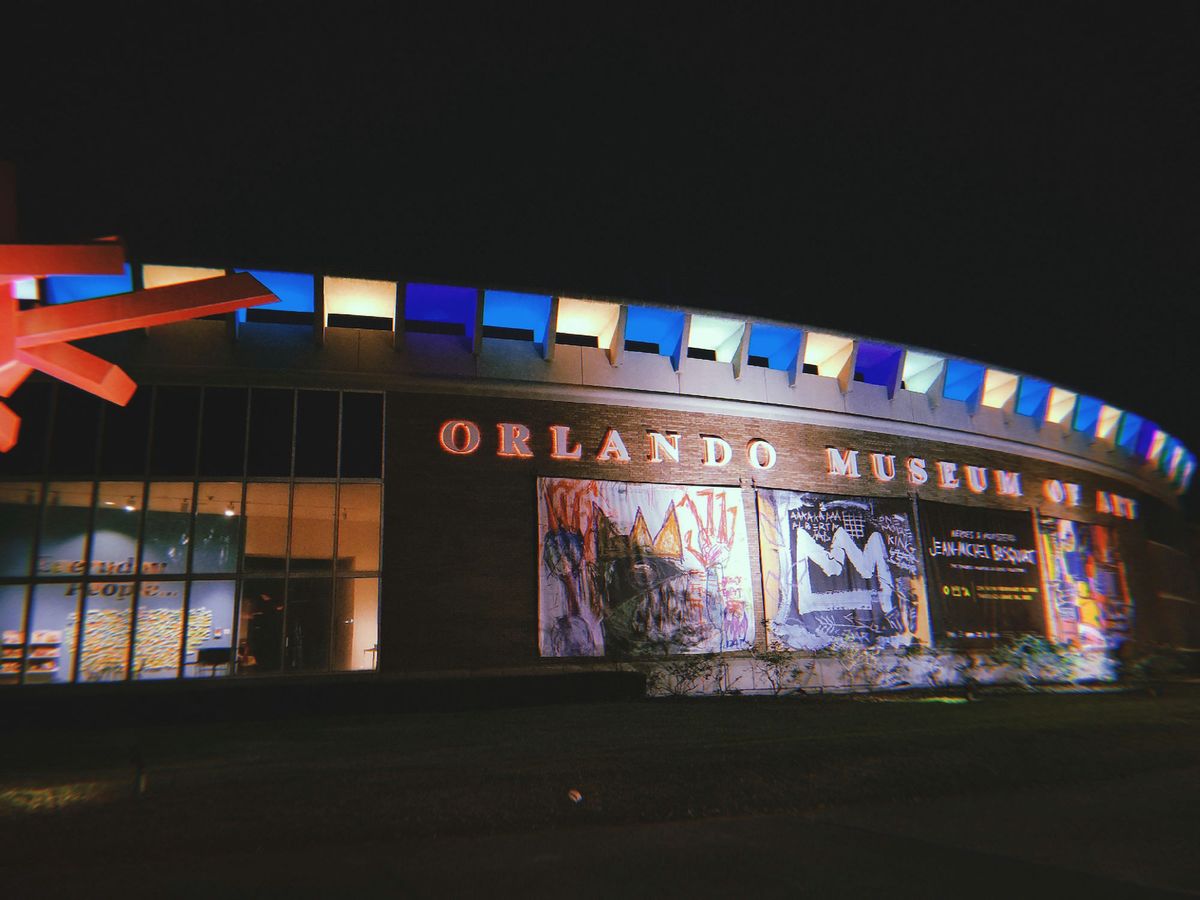The Orlando Museum of Art’s exhibition Heroes & Monsters: Jean-Michel Basquiat, The Thaddeus Mumford, Jr. Venice Collection was forced to close early when, on Friday (24 June), the FBI raided the Florida museum and seized all 25 of the show’s paintings amid questions about their authenticity. The works are all painted on cardboard and range in scale from 10in to nearly 5ft.
The Orlando Museum’s director and chief executive Aaron De Groft told the New York Times in February that the suite of paintings had been created in 1982 and sold by Basquiat that year directly to the screenwriter Thad Mumford for a total sum of $5,000 while Basquiat was living and working beneath Larry Gagosian’s home in Venice, California. (Gagosian himself said he “finds the scenario of the story highly unlikely”.) In 2012, when Mumford didn’t pay the bill on the storage unit in which the paintings were kept, the works were auctioned off and bought by a man named William Force for $15,000. Mumford passed away in 2018. “I’ve absolutely no doubt these are Basquiats,” De Groft told Times in February, adding, “My reputation is at stake as well.”
There are a number of reasons why the authenticity of the paintings has been drawn into question. The most glaring bit of evidence against their legitimacy is that one was painted on a piece of cardboard from a FedEx box in which the phrase “Align top of FedEx Shipping Label here” is printed on the back in a typeface that the company did not use until 1994, 12 years after the painting is said to have been made and six years after Basquiat’s death. (This was corroborated by Lindon Leader, who redesigned the typeface in question in 1994.) Considering that Basquiat’s paintings are among the most valuable of all time, there is also the question of why Mumford would default on his storage locker payments rather than simply sell the works, which would no doubt be worth millions of dollars if genuine.
These issues are further complicated by the fact that the official authentication committee within Basquiat’s estate formally disbanded in 2012 following a lawsuit over works said to be by the artist that were deemed fake. In its 18 operative years, the committee reviewed over 2,000 works of art. In contrast to claims that these works are forgeries, Diego Cortez, a tastemaking curator, early Basquiat supporter and founding member of the since-dissolved authentication committee, signed statements in 2018-19 asserting that he believed all 25 works were real Basquiats, and in 2017 a forensic investigation by the handwriting expert James Blanco also resulted in the conclusion that the signatures that appear on many of the paintings are genuine. (Cortez died in 2021.) Jordana Moore Saggese, an art history professor and author of Reading Basquiat: Exploring Ambivalence in American Art, said in 2017 that she believed some of the works to be authentic, but later attempted to distance herself from this claim.
An affidavit was filed to secure the search warrant on the basis of two possible crimes, conspiracy and wire fraud, and according to the New York Times—which secured a copy of the affidavit—Saggese was paid $60,000 for her work before contacting the museum and asking to no longer be associated with the exhibition. De Groft then reportedly replied to her via email saying, “You want us to put out there you got $60 grand to write this? Ok then. Shut up. You took the money. Stop being holier than thou.” He then added, “Do your academic thing and stay in your limited lane.”
The affidavit also said that, in 2017—one year before his death—Mumford signed a statement saying that “at no time in the 1980s or at any other time did I meet with Jean-Michel Basquiat, and at no time did I acquire or purchase any paintings by him”, calling the exhibition’s entire origin story into question. Elizabeth Rivas, an FBI agent, said she interviewed Mumford in 2014 and that she believed from that interview that “Mumford never purchased Basquiat artwork and was unaware of any Basquiat artwork being in his storage locker”. Rivas also noted that Mumford had said the artwork’s owners “pressured him to sign documents” stating otherwise, and offered him a “10% percent interest in the net proceeds”.
It’s been reported that, prior to the museum show, these paintings were quietly offered for sale a number of times on the secondary market, where they found no buyers. The affidavit says that investigations turned up “attempts to sell the paintings using false provenance, and bank records show possible solicitation of investment in artwork that is not authentic”. The exhibition, which was scheduled to close on 30 June, was going to travel to a museum in Italy following its time in Florida, but museum officials abroad said they would cooperate with authorities on the matter.


